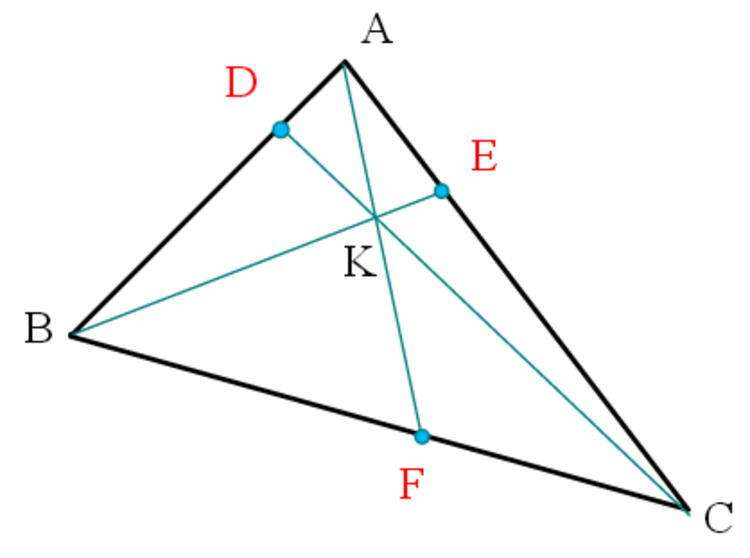Use the right theorem
 In
as shown above, straight lines are drawn from each of the vertices to their respective opposite sides and meet at point
. Furthermore,
, and
.
In
as shown above, straight lines are drawn from each of the vertices to their respective opposite sides and meet at point
. Furthermore,
, and
.
If , the limiting length of can be expressed in the form where and are coprime positive integers. Determine .
The answer is 20.
This section requires Javascript.
You are seeing this because something didn't load right. We suggest you, (a) try
refreshing the page, (b) enabling javascript if it is disabled on your browser and,
finally, (c)
loading the
non-javascript version of this page
. We're sorry about the hassle.
By Ceva's Theorem, we know that
D B A D ⋅ F C B F ⋅ E A C E = 1
and we also know that
D B A D = 2 E C A E ,
so
2 E C A E ⋅ F C B F ⋅ E A C E = 1
F C B F = 2 1
To determine the limiting length of B F , we first have to note that the limiting length of B C is 1 7 (by triangle inequality).
So,
F C B F = 1 7 − x x = 2 1
solving that we get that x = 3 1 7 , which we get a = 1 7 , and b = 3 , giving us a + b = 2 0 .